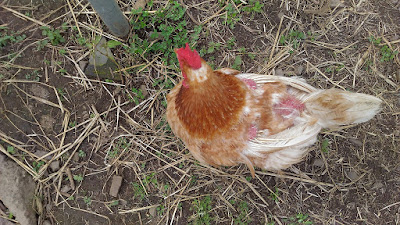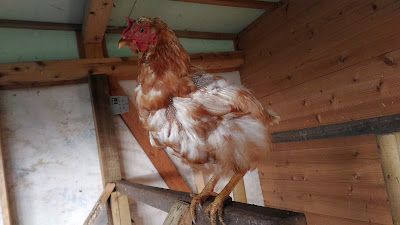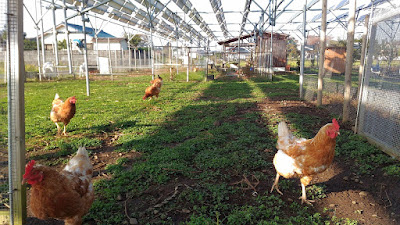 |
| Everyone doesn't have to look like a model, right?! |
The assorted possible reasons included stress (I tried hard but couldn't think of any source of stress of our chickens), disease (other than bald backs, chickens appeared healthy), bad nutrition (for a while I actually increased the proportion of ready-made feed to make sure I wasn't screwing up nutritional balance with too much of local sources, but nothing changed.), skin parasites (I checked bad-looking chickens for mite and the like, and found nothing), pecking (there is clear hierarchy in the flock and small fights do occur, but I never witnessed the kind of aggressive pecking that would lead to such feather loss.), and roosters (repeated jumping on the hen's back can damage her feathers - this still seems to be the case for popular hens, even though we now have only one rooster.) None of these options looked plausible, and no wonder, the answer was much simple: our chickens entered the molting period.
Molting
Molting is a natural process usually occuring in late summer or in fall, when days get shorter and chickens finish their egg laying cycle (about 10-month long). Not all chickens follow the textbook description and some start molting earlier, some later, and even their molting patterns are individual. It can take two to four months to replace the old feathers with new ones, so we can expect chickens' shabby look to continue for a while.
 |
| This is the worst-looking chicken in our flock. This girl is losing all feathers at once (unlike other chickens who mostly have just bald backs)... |
 |
| ... but she's also regrowing them much faster than others (the sharp 'needles' sticking out of the skin are new feathers.) |
The aesthetic consequence of molting is temporary unsightliness, which is fine. The economic consequence is more serious - during molting, chickens lay fewer eggs, and of worse quality. Commercial egg farms deal with this "problem" in one of two ways: 1. they kill the chickens (and replace them with new ones); 2. they do forced molting - induce molt in the chickens by starving them for two weeks, during which they regrow their feathers quickly and start laying a lot of pretty eggs again for a few more months. This forced molting is considered animal abuse and banned in many countries, but not in Japan. I know of at least one small farmer raising hens in barns (平飼い)who does forced molting in his flock.
Which leads us to the question: What is the plan on our farm, which is, after all, a commercial operation. Needless to say, we won't do the forced molting. The plan has been to reduce the number of chickens by the end of this year. Of course reducing the number of chickens is euphemism for killing them, and that's where we bumped into a problem: we are not able to kill them. I tried and I couldn't do it. The line between a "pet" and an "economic animal" has always blurry on our farm. Just as most people would (and should) find it difficult to cut their cat's or hamster's throat and let it bleed out, so do we find it difficult to kill our chickens. We'll have to figure out what to do, and how to do it.
In the meantime, here are a few pics from yesterday. Title: Enjoying life, chicken version.
(Molting is only problem for humans.)









